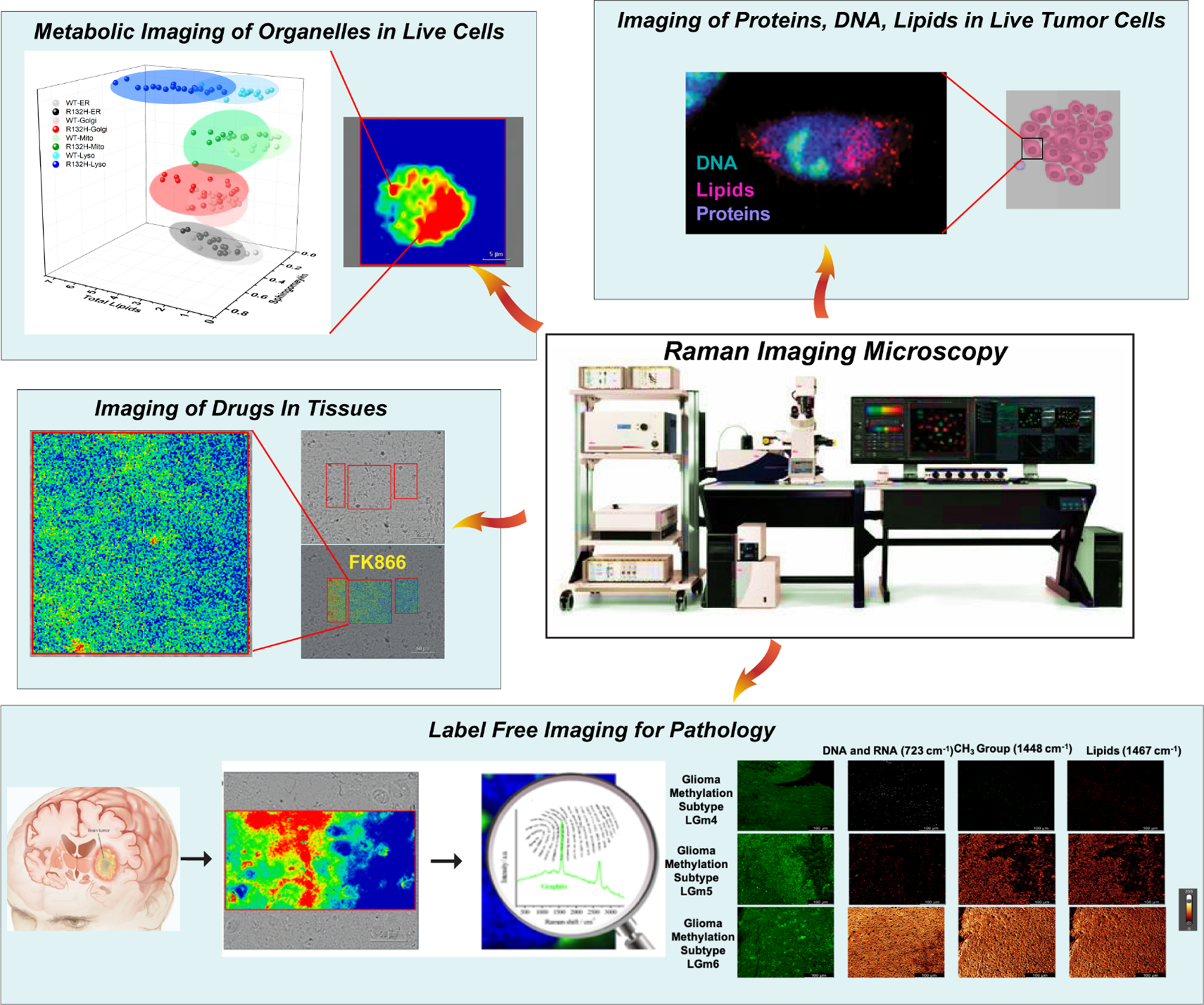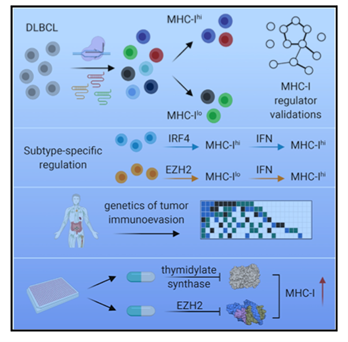Selected Highlights of Previously Funded FLEX Awards
Since its inception in 2015, the FLEX program has catalyzed new science, facilitated synergistic collaborations and has been highly productive. There have been 68 FLEX Awards that have resulted in over 100 publications, many in top-tier journals, as well as 24 new clinical trials and numerous commercial partnerships. The outcomes of several successful FLEX awards are summarized below. Additional highlights will be added in the coming months.
Shalini Oberdoerffer was the lead PI for a New Directions award in 2015 entitled “Metabolic Regulation of the Epitranscriptome”.
This project developed tools to detect N4-acetycytidine (ac4C) and map targets in RNAs. Subsequently they found ac4C modifies mRNA through the acetyltransferase enzyme NAT10, expanding the repertoire of mRNA modifications to include an acetylated residue and highlighting a role for ac4C in the control of mRNA metabolism. Specifically, ac4C was demonstrated to modulate mRNA translation. They are currently investigating whether targeted acetylation could be developed as a therapeutic for diseases resulting from insufficient translation such as haploinsufficiency disorders. Some publications resulting from this project are listed below.
- Sturgill, D., Arango, D., Oberdoerffer, S., Protocol for base resolution mapping of ac4C using RedaC:T-seq. STAR Protocols, 3(4):101858 (2022).
- Arango, D., Sturgill, D., Yang, R., Kanai, T., Bauer, P., Roy, J., Wang, Z., Hosogane, M., Schiffers, S., Oberdoerffer, S., Direct epitranscriptomic regulation of mammalian translation initiation through N4-acetylcytidine. Molecular Cell, 82(15):2797-2814 (2022).
- Arango, D., Sturgill, D., Oberdoerffer, S., Immunoprecipitation and Sequencing of acetylated RNA. Bio-protocol, 9(12): e3278 (2019).
- Arango, D., Sturgill, D., Alhusaini, N., Dillman, A., Sweet, T.J., Hanson G., Sinclair, W., Hosogane, M., Nanan, K.K., Fox, S.D., Zengeya, T., Andresson, T., Meier, J.L., Coller, J., Oberdoerffer, S. Acetylation of cytidine in messenger RNA promotes translation efficiency. Cell, 175: 1872-1886 (2018).
- Thomas, J., Briney, C., Lopez, J., Nance, K., Thorpe, A., Fox, S., Bortolin-Cavaille, M., Arango, D., Oberdoerffer, S., Cavaille, J., Andresson, T., Meier, J.L. A Chemical Signature for Cytidine Acetylation in RNA. J Am Chem Soc. 140:12667-12670 (2018).
- Sinclair W.R., Arango D., Shrimp J.H., Zengeya T.T., Thomas M.M., Montgomery D.C., Fox S.D., Andresson T., Oberdoerffer S., Meier J.L. Profiling Cytidine Acetylation with Specific Affinity and Reactivity. ACS Chem Biol 12 (12): 2922-2926 (2017).
Andre Nussenzweig was the lead PI on FLEX awards in 2015 (Technical Development) and 2017 (New Directions) entitled “Genomic Approaches to Map DNA Breaks and Replication Profiles in Cancers” and “DNA Breaks as a Source of Genomic Diversity in the Brain” respectively.
The 2015 project developed END-seq, a genome-wide approach that maps DNA double-strand breaks (DSBs) with precision and sensitivity. END-seq provides a snapshot of DNA ends genome-wide. This method has been a breakthrough that has enabled researchers to address many long-standing questions in various fields including cancer, transcription, recombination, and meiosis. They then used this approach in the 2017 project to monitor DNA breaks in neurons. High levels of single strand breaks were observed at active neuronal enhancers, which they linked to programmed DNA demethylation by TET enzymes. Some publications resulting from this project are listed below.
- Canela A, Sridharan S, Sciascia N, Tubbs A, Meltzer P, Sleckman BP, Nussenzweig A. DNA Breaks and End Resection Measured Genome-wide by End Sequencing. Mol Cell. 63:898-911 (2016).
- Canela A, Maman Y, Jung S, Wong N, Callen E, Day A, Kieffer-Kwon KR, Pekowska A, Zhang H, Rao SSP, Huang SC, Mckinnon PJ, Aplan PD, Pommier Y, Aiden EL, Casellas R, Nussenzweig A. Genome Organization Drives Chromosome Fragility. Cell. 170:507-521, (2017).
- Tubbs A, Sridharan S, van Wietmarschen N, Maman Y, Callen E, Stanlie A, Wu W, Wu X, Day A, Wong N, Yin M, Canela A, Fu H, Redon C, Pruitt SC, Jaszczyszyn Y, Aladjem MI, Aplan PD, Hyrien O, Nussenzweig A. Dual Roles of Poly(dA:dT) Tracts in Replication Initiation and Fork Collapse. Cell. 174:1127-1142, (2018).
- Canela A, Maman Y, Huang SN, Wutz G, Tang W, Zagnoli-Vieira G, Callen E, Wong N, Day A, Peters JM, Caldecott KW, Pommier Y, Nussenzweig A. Topoisomerase II-Induced Chromosome Breakage and Translocation Is Determined by Chromosome Architecture and Transcriptional Activity. Mol Cell. 75; 252-266 (2019).
- Shinoda K, Maman Y, Canela A, Schatz DG, Livak F, Nussenzweig A. Intra-Vκ Cluster Recombination Shapes the Ig Kappa Locus Repertoire. Cell Rep. 29; 4471-4481 (2019).
- Callen E, Zong D, Wu W, Wong N, Stanlie A, Ishikawa M, Pavani R, Dumitrache LC, Byrum AK, Mendez-Dorantes C, Martinez P, Canela A, Maman Y, Day A, Kruhlak MJ, Blasco MA, Stark JM, Mosammaparast N, McKinnon PJ, Nussenzweig A. 53BP1 Enforces Distinct Pre- and Post-resection Blocks on Homologous Recombination. Mol Cell. 77; 26-38 (2020).
- Paiano J, Wu W, Yamada S, Sciascia N, Callen E, Paola Cotrim A, Deshpande RA, Maman Y, Day A, Paull TT, Nussenzweig A. ATM and PRDM9 regulate SPO11-bound recombination intermediates during meiosis. Nat Commun. 11; 857 (2020).
- van Wietmarschen N, Sridharan S, Nathan WJ, Tubbs A, Chan EM, Callen E, Wu W, Belinky F, Tripathi V, Wong N, Foster K, Noorbakhsh J, Garimella K, Cruz-Migoni A, Sommers JA, Huang Y, Borah AA, Smith JT, Kalfon J, Kesten N, Fugger K, Walker RL, Dolzhenko E, Eberle MA, Hayward BE, Usdin K, Freudenreich CH, Brosh RM Jr, West SC, McHugh PJ, Meltzer PS, Bass AJ, Nussenzweig A. Repeat expansions confer WRN dependence in microsatellite-unstable cancers. Nature. 586 (7828): 292-298 (2020).
- Wu W, Hill SE., Nathan WJ, Paiano J, Callen E, Wang D, Shinoda K, van Wietmarschen N, Colón-Mercado JM, Zong D, de Pace Rafaella, Shih H-Y, Coon S, Parsadanian M, Pavani R, Hanzlikova H, Park S, Jung SK, McHugh PJ, Canela A, Chen C, Casellas R, Caldecott KW, Ward ME, Nussenzweig A. Neuronal Enhancers are Hotspots for DNA Single-Strand Break Repair. Nature. 593 (7859): 440-444 (2021).
- Wang, D., Wu, W., Callen, E., Pavani, R., Zolnerowitch, N., Kodali, S., Zong, D., Wong, N., Noriega, S., Nathan, W., Rodrigues, G., Chari, R., Kruhlak, M.J., Livak, F., Ward, M., Caldecott, K., Di Stefano, B., and Nussenzweig, A., Active DNA demethylation promotes cell fate specification and the DNA damage response. Science, 378(6623): 983-989 (2022).
Mioara Larion was the lead PI for a Technology Development award in 2017 entitled “Live Cell Metabolism via Raman Imaging Microscopy”.
This project developed Raman Imaging Microscopy methods to monitor metabolic changes in organelles of live cells and in tissue with the objective of detecting differences between normal cells and infiltrating ones, as well as distinguishing between different tumor grades. Using this technology they identified a lipid-based vulnerability in glioma cells expressing a mutant form of IDH1 (IDH1mut). These findings have the potential to identify new molecular targets for glioma therapy. Some publications resulting from this project are listed below.
- Ruiz-Rodado, V., Lita, A., Larion, M., Advances in measuring cancer cell metabolism with subcellular resolution, Nature Methods, 19: 1048–1063 (2022).
- Pliss, A., N. Kuzmin, A.N., Lita, A., Kumar, R., Celiku, O., Atilla-Gokcumen, G. E., Gokcumen, O., Dhyan Chandra, D., Larion, M., Prasad, P.N. Single organelle optical omics platform for cell science and biomarkers discovery, Anal Chem. 93 (23): 8281-8290 (2021).
- Lita, A., Pliss, A., Kuzmin A., Tomohiro Yamasaki, T., Zhang, L., Dowdy, T., Burks, C., de Val, N., Celiku, O., Ruiz-Rodado, V., Nicoli, E-R., Kruhlak, M., Andresson, T., Das, S., Yang, C., Schmitt, R, Herold-Mende, C., Gilbert, M., Prasad, P., Larion, M., IDH1 Mutations Induce Organelle Defects via Dysregulated Phospholipids, Nature Communications, 12(1): 614 (2021).
- Lita A, Kuzmin AN, Pliss A, et al. Toward Single-Organelle Lipidomics in Live Cells. Anal Chem. 91 (17): 11380–11387 (2019).
- Larion, M.; Dowdy, T.; Ruiz-Rodado, V.; Meyer, M. W.; Song, H.; Zhang, W.; Davis, D.; Gilbert, M. R.; Lita, A., Detection of Metabolic Changes Induced via Drug Treatments in Live Cancer Cells and Tissue Using Raman Imaging Microscopy. Biosensors 9 (1) (2018).
- Kuzmin, A. N.; Pliss, A.; Rzhevskii, A.; Lita, A.; Larion, M., BCAbox Algorithm Expands Capabilities of Raman Microscope for Single Organelles Assessment. Biosensors, 8 (4) (2018).
- Su, Y. T.; Chen, R.; Wang, H.; Song, H.; Zhang, Q.; Chen, L. Y.; Lappin, H.; Vasconcelos, G.; Lita, A.; Maric, D.; Li, A.; Celiku, O.; Zhang, W.; Meetze, K.; Estok, T.; Larion, M.; Abu-Asab, M.; Zhuang, Z.; Yang, C.; Gilbert, M. R.; Wu, J., Novel Targeting of Transcription and Metabolism in Glioblastoma. Clinical Cancer Research, 24 (5), 1124-1137 (2018).
- Hao, S.; Song, H.; Zhang, W.; Seldomridge, A.; Jung, J.; Giles, A. J.; Hutchinson, M. K.; Cao, X.; Colwell, N.; Lita, A.; Larion, M.; Maric, D.; Abu-Asab, M.; Quezado, M.; Kramp, T.; Camphausen, K.; Zhuang, Z.; Gilbert, M. R.; Park, D. M., Protein phosphatase 2A inhibition enhances radiation sensitivity and reduces tumor growth in chordoma. Neuro-oncology 20 (6), 799-809 (2018).
Lou Staudt was the primary PI for a 2017 Synergy Award on “New Frontiers in Cancer Cell Antigen Processing and Immune Evasion”.
The MHC class I antigen presentation system enables T cell immunosurveillance of cancers and viruses, making checkpoint inhibitor therapy possible. This project found that ribosomal proteins regulate MHC Class I peptide generation for tumor cell immunosurveillance, raising the possibility of modulating immunosurveillance by pharmaceutical targeting ribosomes. In addition, this team identified lineage- and tumor-specific genes modulating MHC-I- and MHC-II-restricted immunosurveillance in human diffuse large B cell lymphoma cells. These could represent potential targets for manipulating MHC-I immunosurveillance in cancers, infectious diseases, and autoimmunity. Some publications resulting from this project are listed below.
- Wei, J., Kishton, R.J., Angel, M., Conn, C.S., Dalla-Venezia, N., Marcel, V., Vincent, A., Catez, F., Ferre, S., Ayadi, L., Marchand V, Dersh D, Gibbs JS, Ivanov IP, Fridlyand N, Couté Y, Diaz JJ, Qian SB, Staudt LM, Restifo NP, Yewdell J.W., Ribosomal proteins regulate MHC class I peptide generation for immunosurveillance. Mol Cell. 73:1162-1173, (2019).
- Dersh D, Phelan JD, Gumina ME, Wang B, Arbuckle JH, Holly J, Kishton RJ, Markowitz TE, Seedhom MO, Fridly N, Wright GW, Huang DW, Ceribelli M, Thomas CJ, Lack JB, Restifo NB, Kristie KM, Staudt LM, Yewdell JW. Genome-wide screens identify lineage- and tumor specific-genes modulating MHC-I and MHC-II immunosurveillance in human lymphomas. Immunity, 54:116-131 (2021).
Brad St. Croix, Mitchell Ho and Javed Khan were the PIs for a 2018 Synergy Award on “Optimized Immunotherapeutic Targeting of Neuroblastoma” Development.
The objective of this team project was to develop Chimeric Antigen Receptor (CAR)-based immunotherapies against two cell surface proteins, GPC2 (Glypican-2) and CD276 (B7-H3), for treatment of Neuroblastoma (NB). The project resulted in generation of a GPC2 (CT3) CAR, which they are currently working towards bringing to the clinic for NB patients. Studies developing functionally selected CAR constructs for GPC2 and CD276 are in progress and will ideally provide enhanced responses with the potential to treat many NB patients with minimal toxicity. Further, targeting these antigens with the novel CAR T cells developed using this approach may be useful in the treatment of a variety of other cancers. Some publications resulting from this project are listed below.
Ruonan Feng, Ruixue Wang, Jessica Hong, Christopher M. Dower, Brad St. Croix, Mitchell Ho. Isolation of rabbit single domain antibodies to B7-H3 via protein immunization and phage display. Antib Ther. 3(1):10-17 (2020).
- Nan Li, Madeline B. Torres, Madeline R. Spetz, Ruixue Wang, Luyi Peng, Meijie Tian, Christopher M. Dower, Ming Sun, Chin-Hsien Tai, Natalia de Val, Raul Cachau, Xiaolin Wu, Stephen M. Hewitt, Rosandra N. Kaplan, Javed Khan, Brad St. Croix, Carol J. Thiele, Mitchell Ho. CAR T cells targeting tumor-associated exons of glypican 2 for treating childhood cancer. Cell Rep Med. 2(6):100297 (2021).
- Meijie Tian, Adam T. Cheuk, Jun S. Wei, Abdalla Abdelmaksoud, Hsien-Chao Chou, David Milewski, Michael C Kelly, Young K Song, Christopher M Dower, Nan Li, Haiying Qin, Yong Yean Kim, Jerry T Wu, Xinyu Wen, Mehdi Benzaoui, Katherine E Masih, Xiaolin Wu, Zhongmei Zhang, Sherif Badr , Naomi Taylor, Brad St Croix, Mitchell Ho, Javed Khan. An optimized bicistronic chimeric antigen receptor against GPC2 or CD276 overcomes heterogeneous expression in neuroblastoma. J Clin Invest 132 (16): e155621 (2022).



